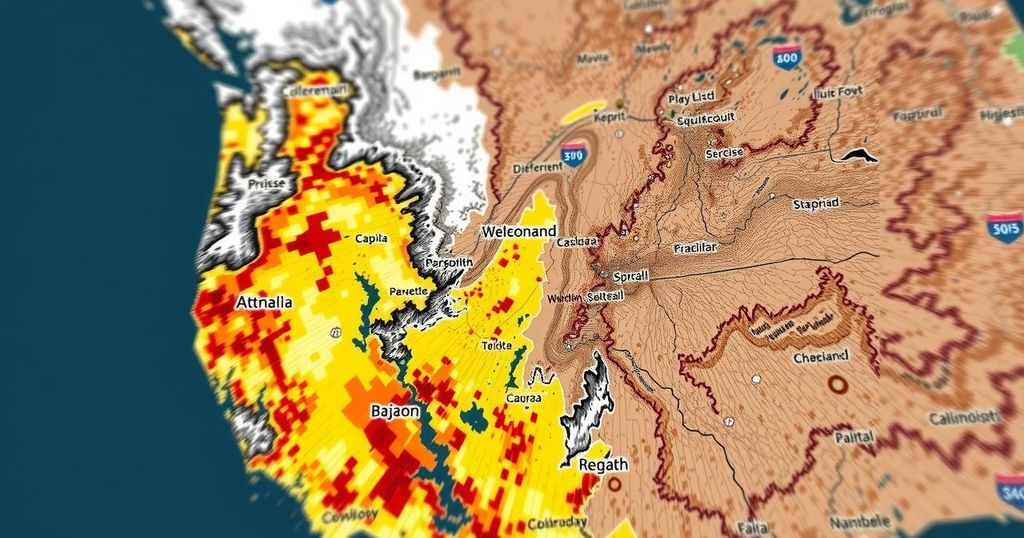A study by UCLA and NOAA indicates that climate change is exacerbating drought conditions in Colorado and the Western United States, leading to significant evaporation regardless of rainfall levels. The research shows that between 2020 and 2022, evaporation accounted for 61% of drought severity in the region, prompting calls for revised definitions of drought in the context of climate change.
A recent study conducted by scientists from UCLA and NOAA has revealed that climate change is significantly affecting drought conditions in the Western United States, including Colorado. Even in years with adequate precipitation, increased atmospheric temperatures are causing excessive evaporation, which leads to drought-like conditions. From 2020 to 2022, a severe drought was primarily attributed to heat-driven evaporation rather than insufficient rainfall. The study emphasizes the need for robust drought preparedness as the frequency and intensity of droughts are expected to rise significantly due to warming temperatures. The researchers highlighted that with rising summer temperatures, the region will continue to face challenges, regardless of normal levels of rainfall. Joel Lisonbee, a regional drought information coordinator, stated, “It is becoming the reality of the world that we’re living in.” The findings suggest that the conventional understanding of drought must evolve to account for these new realities brought about by climate change, where evaporative demand takes precedence over precipitation deficits. Moreover, Rong Fu, a coauthor of the study, indicated that the only solution to mitigate these effects is to reduce greenhouse gas emissions, thereby controlling global temperatures. Between 2000 and 2022, the research revealed a dramatic shift in the causes of drought, with evaporation being responsible for 61% of drought severity, marking a notable increase from the previous decades. This shift underscores the need for an updated definition of drought that reflects the broader influences of climate change. As droughts are expected to become more frequent and severe, it is imperative to re-evaluate long-held definitions and perceptions regarding drought occurrences. Lisonbee questioned whether current definitions should be based on historical records dating back to the late 1800s or those more reflective of recent climatic conditions, asserting that this is an evolving philosophical debate.
The article addresses the impact of climate change on drought conditions in the Western United States, particularly focusing on Colorado. With rising temperatures, the relationship between precipitation and drought has shifted, leading scientists to emphasize evaporation’s critical role in drought severity. The research conducted by UCLA and NOAA highlights a worrying trend that drought conditions will persist even amidst normal rainfall levels, necessitating a reassessment of how drought is defined and understood in the context of climate change.
In conclusion, the study conducted by UCLA and NOAA draws attention to the increasingly complex nature of drought in the context of climate change. As evaporation becomes a more significant factor in drought severity, it is essential for policymakers and researchers to adapt their understanding of drought and prepare for its future implications. Mitigating greenhouse gas emissions remains vital in addressing the fundamental problem of rising temperatures and their consequences.
Original Source: coloradosun.com







